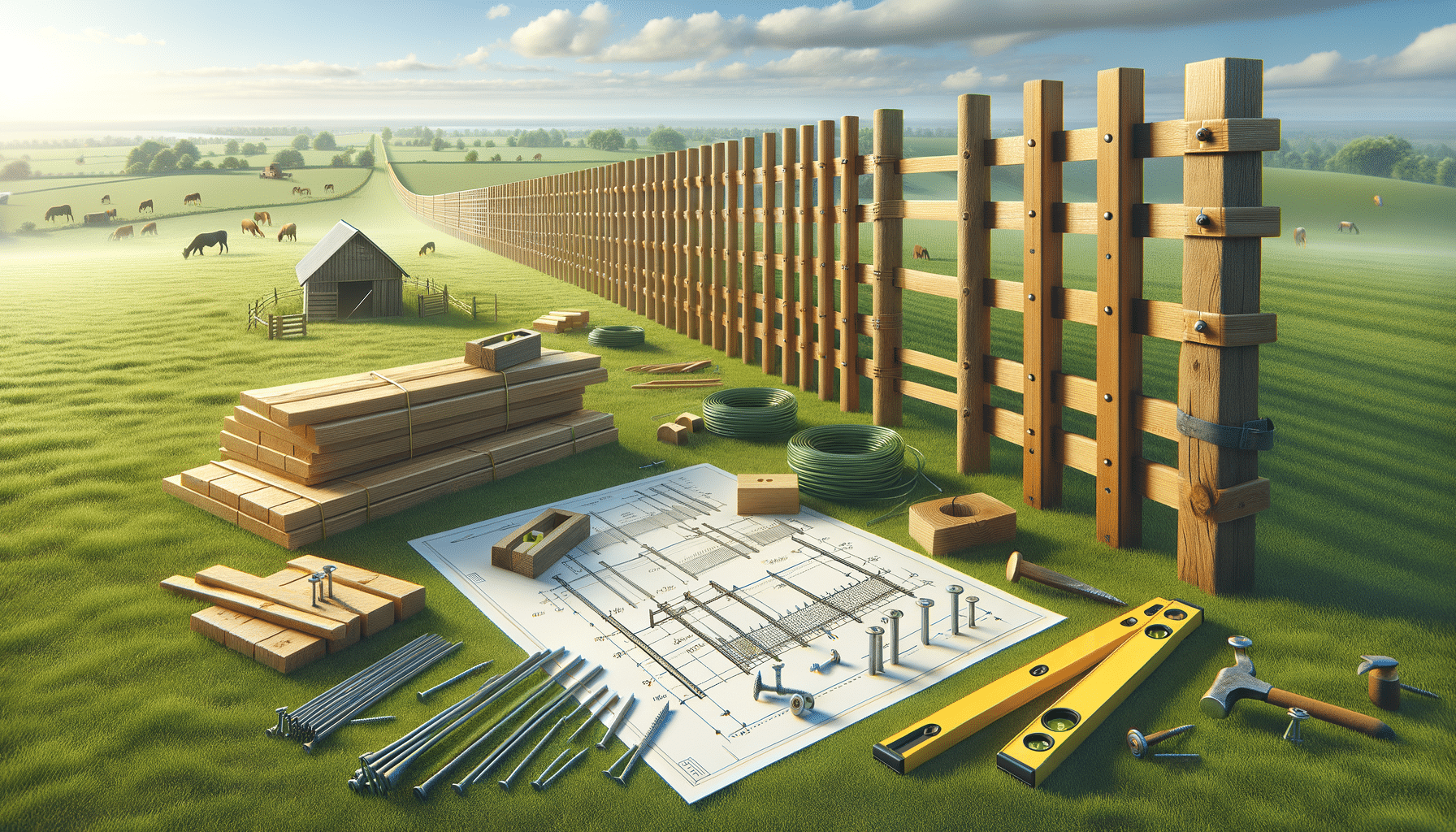A Comprehensive Guide to Building a Durable and Economical Farm Fence
This detailed guide provides you with insights into constructing a robust and economical farm fence. It covers vital aspects such as material selection and installation techniques, ensuring your land, livestock, and crops are well-guarded. Whether you’re protecting a minor plot or a vast ranch, start with confidence.

Understanding Your Needs and Planning
Before embarking on building a farm fence, it’s crucial to understand the specific needs of your property. Different farms require different types of fencing based on the livestock, crops, and the overall purpose of the fence. For instance, a farm with cattle will need a sturdier fence compared to one with poultry. Planning involves assessing the size of the area to be fenced, the type of animals or crops to be protected, and the local climate conditions. A well-planned fence ensures longevity and effectiveness.
Considerations during the planning stage should include:
- The type of livestock or crops you have.
- The terrain and soil type of your farm.
- Local weather conditions and their impacts on materials.
- Your budget and long-term maintenance costs.
By clearly defining your needs and planning accordingly, you set a strong foundation for a successful fencing project.
Choosing the Right Materials
The choice of materials can significantly impact the durability and cost-effectiveness of your farm fence. Common materials include wood, metal, and synthetic options like PVC. Each material has its advantages and limitations, and the decision should be based on the specific requirements of your farm.
Wooden fences are traditional and offer a natural aesthetic, but they require regular maintenance to prevent rot and pest damage. Metal fences, such as those made from steel or aluminum, are sturdy and long-lasting, though they can be more expensive initially. PVC or vinyl fences are low-maintenance and resistant to weathering, but they may not be as strong as metal options.
When selecting materials, consider factors like:
- The lifespan of the material.
- Maintenance requirements and costs.
- Initial investment versus long-term savings.
- Environmental impact and sustainability.
Choosing the right material is a balance between cost, durability, and maintenance, ensuring your fence serves its purpose effectively.
Installation Techniques and Tips
Proper installation is key to ensuring the stability and longevity of your farm fence. Regardless of the material chosen, certain techniques can enhance the effectiveness of your fence. Start by marking the boundary lines clearly and ensuring they are straight and even. This step is crucial for both aesthetic and functional purposes.
Post setting is another critical aspect. Posts should be buried deep enough to withstand environmental forces and the pressure from livestock. A common rule of thumb is to bury at least one-third of the post’s length in the ground. Using concrete to set the posts can add extra stability, especially in areas with loose soil.
When attaching the fencing material, ensure it is taut and secure. Loose or sagging fences are prone to damage and may not effectively contain livestock. Regular checks and maintenance can help identify and rectify any issues early on.
Effective installation involves:
- Accurate marking and leveling of boundary lines.
- Secure and deep post setting.
- Proper tensioning of the fence material.
- Regular maintenance checks and repairs.
By following these techniques, you can build a fence that stands the test of time and fulfills its protective role efficiently.
Cost Considerations and Budgeting
Building a farm fence involves various costs, from materials and labor to maintenance. Understanding these costs and budgeting accordingly can prevent financial strain and ensure the project is completed successfully. Initial costs include purchasing materials, hiring labor for installation, and any necessary tools or equipment.
While it might be tempting to cut costs by opting for cheaper materials, this can lead to higher maintenance and replacement costs in the long run. Investing in quality materials and skilled labor can provide better value over time. Additionally, consider the potential savings from reduced livestock loss or crop damage, which can offset initial expenses.
Effective budgeting involves:
- Calculating the total area to be fenced and estimating material quantities.
- Researching and comparing material and labor costs.
- Allocating funds for regular maintenance and unforeseen repairs.
- Considering long-term savings from reduced losses.
By carefully planning and budgeting, you can build a farm fence that meets your needs without exceeding your financial limits.
Maintenance and Longevity
Once your farm fence is installed, ongoing maintenance is essential to ensure its longevity and effectiveness. Regular inspections can help identify potential issues such as rust, rot, or damage from animals and weather. Addressing these issues promptly can prevent them from escalating into more significant problems.
For wooden fences, applying sealants or paint can protect against moisture and pests. Metal fences may require rust prevention treatments, especially in humid or coastal areas. Synthetic materials like PVC generally require less maintenance but should still be checked for cracks or breaks.
Key maintenance practices include:
- Regular inspections for damage or wear.
- Timely repairs to prevent further deterioration.
- Protective treatments for wood and metal fences.
- Clearing vegetation around the fence to prevent damage.
By prioritizing maintenance, you can extend the life of your farm fence and ensure it continues to serve its purpose effectively.